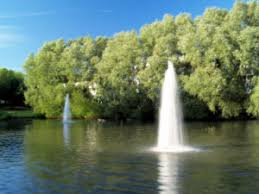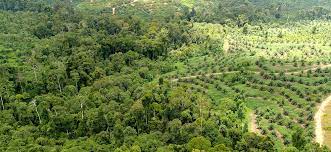The Nature of Natural Resources
Some examples of natural resources include the following:
Atmosphere which include air, wind;
Animals which comprises of wildlife, game reserves;
Land that comprises of Coal, fossil fuels, rock and mineral resources;
Plants of the forest;
Range and pasture;
Soils for agriculture and food;
Water resources that include, sea, oceans, lakes, groundwater, rivers and fishery;
Solar power of the sun energy.
Water Resources
Water covers 71% of the earth’s surface. Of this, 97.5% is the salty water of the oceans and only 2.5% is freshwater, most of which is locked up. The remaining freshwater is found in glaciers, lakes, rivers, wetlands, the soil, aquifers and atmosphere.
Ocean circulation patterns have a strong influence on climate and weather and, in turn, the food supply of both humans and other organisms. From 1961 to 2001 water demand doubled, agricultural use increased by 75%, industrial use by more than 200%, and domestic use more than 400%.
In the 1990s it was estimated that humans were using 40– 50% of the globally available freshwater in the approximate proportion of 70% for agriculture, 22% for industry and 8% for domestic purposes with total use progressively increasing. All life is impossible without water.
It is used for household purposes, irrigation, transport, for producing tidal energy etc. Water is also used in many industries like textiles, iron and steel, paper etc. Tides result in rise and fall of sea water (figure 1.0) which can be harnessed to produce electricity.

Around 71% of the earth’s surface is covered with water. All life is impossible without it. It is used for household purposes, irrigation, transport, for producing tidal energy etc.
Water is also used in many industries like textiles, iron and steel, paper etc.
Tides result in rise and fall of sea water which can be harnessed to produce electricity.
Sun Energy Resources
The Sun’s energy, stored by plants which are the primary producers during photosynthesis, passes through the food chain to other organisms to ultimately power all living processes.
Since the industrial revolution the concentrated energy of the sun stored in fossilized plants as fossil fuels has been a major driver of technology which, in turn, has been the source of both economic and political power.
Other importance of the sun energy resources are;
Whenever we look around, we are able to see because of light. The sun is the major source of light on earth.
Read Also : Effects of Urban Environmental Degradation
The process of photosynthesis also needs light. Animals also need light to move about and to locate their food.
Sunlight can be converted into energy called solar energy.
Land Resources
Land is fundamental to the operations of the biosphere and biodiversity. Alterations in the relative proportions of land is dedicated to urbanization, agriculture, forest, woodland, grassland and pasture have a marked effect on the global water, carbon and nitrogen biogeochemical cycles and this can impact negatively on both natural and human systems.
The major sustainability benefits of land are accruing from sustainable parks and gardens, and green cities.

The following are the importance of land as a natural resource;
The most important use of land to man is that it provides space for work. All activities of man take place on land whether it is agriculture, transport, industry, housing, mining etc.
Most of the passengers and goods are transported by land transportation.
Land provides a large number of minerals like coal, petroleum, iron, copper, gold, mica etc.
Rock and Mineral Resources
Rock and mineral resources have a wide variety of uses and play a huge role in our lives. Minerals which people need include, calcium, phosphorus, sulfur, copper, fluoride, iron, and zinc.
Coal, oil and natural gas provide us with almost all of the energy we use to produce light, heat and run our world. Minerals are ingredients in almost all of the products we use from fertilizer to plastics, toothpaste, knives and cutleries.
Minerals are common ingredients in pigments. In fact, some of the earliest uses of minerals were as pigments. Minerals also play an important role in the processing of materials.
The Table below shows the nature, their uses of natural rock and mineral resources.
Table: The nature of natural rock and mineral resources and their uses
| Resource | Characteristics Exploited and Uses |
| Coal | Used as a fuel because they are flammable. The oils and tars produced from coal processing are re-processed into a variety of organic solvents and compounds such as plastics, motor fuel, photo developer, perfume, medicine, and sugar substitute. |
| Oil/Natural Gas | Oil and natural gas are used as fuels and ingredients in the chemical industry to produce petroleum based products notably plastics. |
| Clay | Used to make pottery and bricks. |
Barite | It is a mineral consisting of Barium Sulphate which is used in oil to weigh down the oil and prevent gushers, filler in paint, glass, toothpaste. |
| Chert | It is a fine-grained silica-rich microcrystalline or microfibrous sedimentary rock that may contain small fossils. It is used to make stone tools also as fill to provide a stable base for roads |
| Chalcopyrite | It is the main ore of Copper (Copper Iron Sulphide Mineral). It is found in igneous and metamorphic rocks. Since it has an attractive appearance it can be used in arts and deor, as Copper is used to make electrical wiring, used in alloys (bronze and brass) also used as an ingredient in pigments (blue and green) |
| Fluorite | Fluorite(also called fluorspar) is a halide mineral composed of calcium fluoride, CaF2. It is used as a flux i.e. used as an intermediate chemical to separate metals from waste material. Another important product made from fluorite is hydrofluoric acid, which is used in the pottery, optics, and plastics industry. Fluorite is also used in making opalescent glass and in enameling cookware. |
| Galena (lead) | This is the natural form of Lead (II) Sulphide. One of the most abundant and widely distributed sulphide minerals. The largest use of lead is in automotive batteries. It is also used as weights because of their high specific gravity. They are used as ingredients in solder because of their soft, low melting point. Until recently it was also used as an ingredient in paint and as an additive in gasoline to make engines run more smoothly. |
| Gypsum | This is a soft white or gray mineral consisting of hydrated calcium sulfate. It occurs chiefly in sedimentary deposits and is used to make plaster of Paris and fertilizers, and in the building industry. It is also an ingredient in cement. |
| Ilmenite (titanium) | Ilmenite is a black mineral consisting of iron titanium oxide. Titanium is used in alloys to make strong light-weight materials such as space ships, bicycles, artificial joints for humans and sporting equipment such as bicycle frames. It is also used in the manufacture of titanium dioxide for paint pigments |
| Iron | It is a metal in the first transition series. It is the most common element in the whole planet Earth, forming much of Earth’s outer and inner core, Iron chemical compounds, which include ferrous and ferric compounds, have many uses. Iron oxide mixed with aluminum powder can be ignited to create a thermite reaction, used in welding and purifying ores. Iron plays an important role in biology–blood circulation and is found in certain foods and vegetables. |
| Limestone | Limestone is a sedimentary rock composed of the mineral calcite (calcium carbonate). Limestone is used as building materials for ornamental stone for surfaces and sculpture, to make cement and mortar. |
| Mussel Shells | Mussel shells were used as ceremonial objects. They are also used as ornaments such as buttons and pearls for jewelry. |
| Phosphate | Phosphate is an inorganic chemical, is a salt of phosphoric acid. Inorganic phosphates are mined to obtain phosphorus for use in agriculture and industry. |
Atmospheric Resources
The atmospheric resources of the Earth serve as key factors in sustaining the planetary ecosystem. The thin layer of gases that envelops the Earth is held in place by the planet’s gravity.
Dry air consists of 78% nitrogen, 21% oxygen, 1% argon and other inert gases, such as carbon dioxide.
The remaining gases are often referred to as trace gases, among which are the greenhouse gases such as water vapor, carbon dioxide, methane, nitrous oxide, and ozone.
The use and importance of atmospheric resources include:
Air: This is an integral component of environment. Man air for uses breathing, burning and other life’s processes.
Oxygen: Oxygen in air is required for breathing by all human beings and animals. It is also used by plants for their processes.
The sound waves travel in air, so we can hear easily.
Wind energy can be harnesses from moving air called wind.
In conclusion, nature of natural resources in this unit unfolds the definition, types, classification and numerous examples of natural resources.
Natural resources can be classified in different ways but in a simple way natural resources can be categorized into various types based on the nature of their origin, stage of development, renewability and availability.
Read Also : Methods of Disposal of Waste Pesticide Containers
Natural resources in this unit refer to the untamed natural essence of the environment that contain a significant amount of material as well as aesthetic values that exist relatively undisturbed by mankind, in a natural form.
The numerous examples of natural resources are interwoven under the categorized groups like water resources, sun energy resources, land resources, rock and mineral resources and atmospheric resources.



